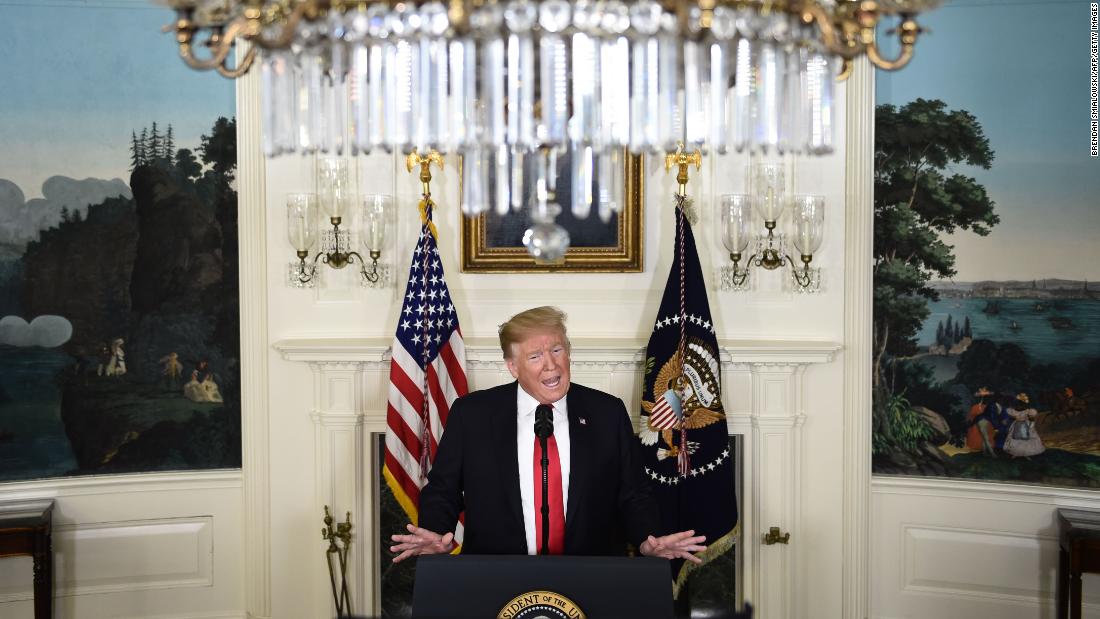[ad_1]
“This is a common-sense compromise both parties should embrace,” Trump said.
The proposal is similar to one Trump handed over to Congress earlier this month. It includes funds for humanitarian assistance, technology, border agents, law enforcement personnel, and immigration judges. Trump laid out additional concessions Saturday that include providing three years of deportation relief to about 700,000 undocumented immigrants who were brought to the US as children and 300,000 immigrants with temporary protected status.
The address comes amid a record-long government shutdown. Trump’s $5.7 billion budget request for his border wall is at the center of the fight. The latest proposal is an attempt to bring Democrats to the table, but it’s unclear the new concessions will win them over. Shortly before the President’s address, House Speaker Nancy Pelosi released a statement rejecting the proposal.
“It is unlikely that any one of these provisions alone would pass the House, and taken together, they are a non-starter,” she said.
Below is a breakdown of Trump’s speech and some of the proposal he laid out:
“There is a humanitarian and security crisis on our southern border that requires urgent action.”
While there’s been a recent uptick in apprehensions along the southern border, the numbers are still shy of the more than one million apprehensions from the early 2000s.
Available Customs and Border Protection data shows a total of 396,579 people were apprehended by the US Border Patrol for fiscal year 2018 at the southwest border, which would mean an average of 1,087 each day. The numbers differ each month. The highest number of apprehensions was in September, with a daily average of nearly 1,400.
Apprehensions are still well below historic highs. In the early 2000s, for example, annual apprehensions routinely topped 1 million. After hitting an historic low in 2017 of around 300,000, apprehensions increased in fiscal year 2018 to nearly 400,000.
There’s been an uptick in unaccompanied minors and families approaching the US-Mexico border, many of whom are seeking asylum. Deteriorating conditions in the Northern Triangle (Guatemala, El Salvador and Honduras) are among the reasons that some have decided to make the journey.
In 2016, nearly half of the people apprehended at the US-Mexico border came from these three countries, compared with roughly 10% in 2010, according to Homeland Security Department data.
“One in three women is sexually assaulted on the dangerous journey north. “
He also cited the flow of drugs across the southern border.
“Heroin alone kills 300 Americans a week, 90% of which comes across our southern border.”
While Trump’s statistics on heroin deaths are true, it’s unclear what a border wall would do to reduce the amount of heroin coming across the border.
However, the majority of heroin that comes across the southern border is smuggled in privately-owned vehicles and tractor-trailers at legal ports of entry, where the drug is co-mingled with legal goods, according to the DEA’s 2018 annual drug threat assessment.
Trump continues to make the case that a border wall will help solve these issues.
“[A border wall] will save many lives and stop drugs from pouring into our country.”
The majority of hard narcotics seized by Customs and Border Protection come through ports of entry either in packages, as cargo, or with people who attempt to enter the US legally. The only drug that is smuggled in higher numbers between legal entry points is marijuana, according to information from CBP and the DEA.
The DHS presentation says there was a 38% increase in methamphetamine at the southern border from 2017 to 2018.
A closer look at the numbers shows that in fiscal year 2018, Customs and Border Protection seized 67,292 pounds of methamphetamine at legal ports of entry, compared with 10,382 pounds by Border Patrol agents in between ports, based on available data.
This story is breaking and being updated.
[ad_2]
Source link

